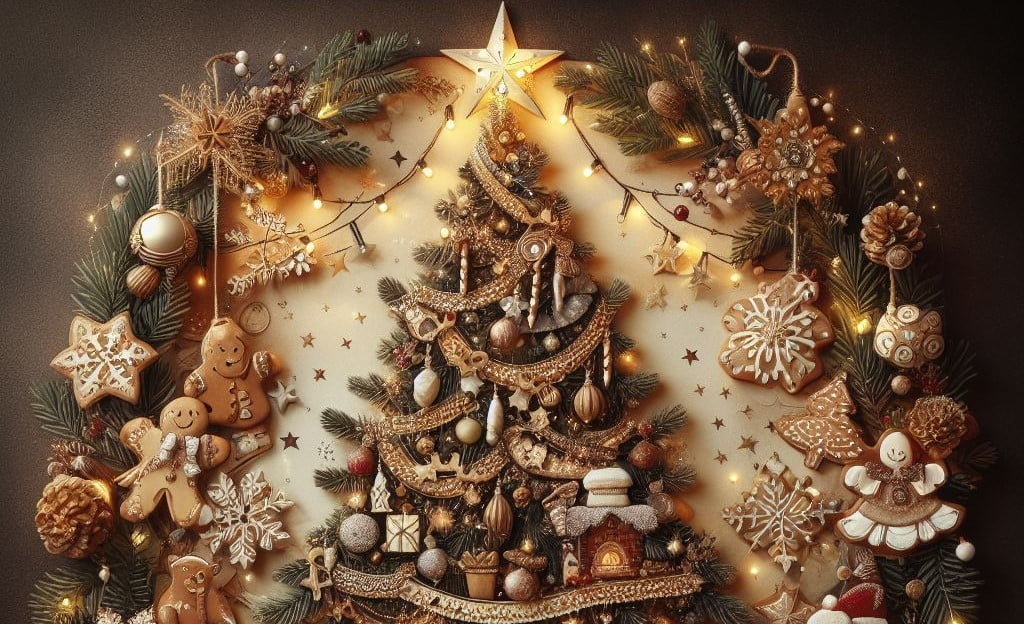A Brief History Of American Christmas Traditions And Customs
Christmas in the United States of America is a beloved and festive holiday celebration that has evolved over centuries, embracing distinct religious and cultural traditions and customs. The American celebration of Christmas has a rich history, with roots dating back to biblical times and influences from around the world. In this blog post, we will explore a brief history of Christmas in the United States, from its ancient origins to the present day.
Ancient Roots and European Influences
The story of Christmas in America begins long before the founding of the United States. The Christmas holiday has its origins in the celebration of the birth of Jesus Christ, as recounted in the New Testament. Since Christianity began to spread across Europe and the Roman Empires acceptance of it in AD 380, various European customs and traditions associated with the Nativity story became part of Christmas celebrations.
When Europeans first arrived in the New World, they brought their Christmas traditions with them. However, the ways Christmas was celebrated in the American colonies were influenced by local cultures and the harsh realities of life in a new land.
The controversies surrounding the celebration of Christmas in the early American colonies were primarily related to religious differences, cultural diversity, concerns about public disorder, and evolving attitudes towards the holiday. Over time, these issues gradually resolved, and Christmas became more widely accepted and celebrated in a variety of ways in different parts of the United States.
In the early American colonies, Christmas was not as widely celebrated as it is today. The Pilgrims, for example, saw Christmas as a time of excess and pagan revelry and chose not to observe it. However, other colonial communities with different backgrounds, such as the Dutch in New Amsterdam (now New York) and the English in Virginia, continued to celebrate Christmas in various ways.
The 18th Century and the Emergence of Christmas Traditions
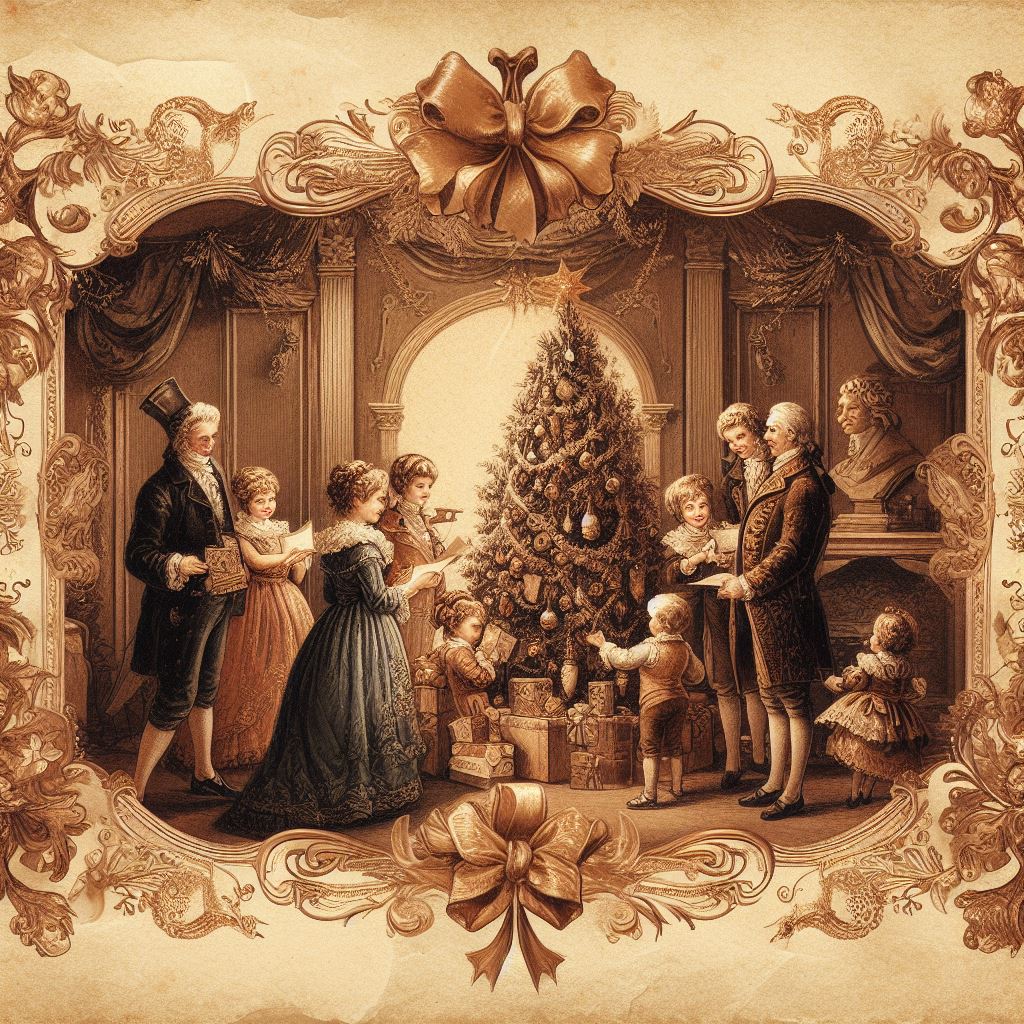
In the 18th century, Christmas in America began to take on more recognizable forms. A transition period for Christmas traditions in the United States. German immigrants, for instance, introduced the Christmas tree tradition. Meanwhile, the publication of Clement Clarke Moore’s poem “A Visit from St. Nicholas” in 1823 helped solidify the American image of Santa Claus. The 18th century laid the foundation for many of the holiday traditions and customs we know today.
Here are some of the key Christmas traditions and practices from the 18th century:
- Church Services:
- Religious observance of Christmas remained an essential part of the holiday during the 18th century. Church services, including midnight Mass and special Christmas sermons, were an integral part of the celebration, particularly among European settlers.
- Christmas Trees:
- The tradition of the Christmas tree began to take hold during the 18th century. German immigrants brought this custom to America, decorating evergreen trees with ornaments and candles. Over time, this tradition became a hallmark of American Christmas celebrations.
- Yule Logs:
- The yule log was a popular tradition during the 18th century. A large log, often from a hardwood tree, was selected and ceremoniously burned in the hearth. This practice symbolized the hope for a prosperous year and the warmth of the Christmas holiday season.
- Caroling:
- Caroling, or the singing of Christmas carols, became a cherished tradition in the 18th century. Groups of singers would visit homes and sing festive songs, often in exchange for food or small gifts. Caroling helped spread the joy of the Christmas season throughout communities.
- Mince Pies and Plum Pudding:
- Traditional Christmas foods like mince pies and plum pudding were enjoyed during the 18th century. Mince pies were filled with a mixture of minced meat, suet, spices, and dried fruits, while plum pudding was a dense and rich dessert, both often accompanied by brandy or other spirits.
- Christmas Cards:
- The exchange of Christmas cards became popular in the 18th century. These early cards were often handmade or featured elaborate handcrafted designs. They served as a way to convey good wishes and holiday greetings to loved ones.
- Twelfth Night Celebrations:
- Twelfth Night, which marks the end of the Christmas season, was celebrated in the 18th century with parties and special gatherings. It was a time for merrymaking, feasting, and socializing before the holiday season came to a close.
- Gift-Giving:
- The custom of exchanging gifts was present in the 18th century, but it was not as widespread or commercialized as it is today. Gifts were often simple and practical, such as handmade crafts or small tokens of affection.
- Colonial Variations:
- The way Christmas was celebrated varied by region and cultural background. For example, the Dutch in New Amsterdam celebrated St. Nicholas Day, while English settlers focused on Christmas Day. These regional and cultural variations contributed to the diversity of 18th-century Christmas traditions.
- Reemergence of Christmas:
- During the 18th century, Christmas reemerged as a more family-oriented holiday. The influence of British customs and the writing of Charles Dickens “A Christmas Carol” in 1843 helped shape a more unified and family-centered Christmas celebration.
These 18th-century traditions are the foundation for the more modern American Christmas traditions we celebrate today. The holiday continued to evolve and adapt with changing cultural influences and technological advancements in the centuries that followed.
19th Century Christmas Evolves Into A More Family-Oriented Holiday
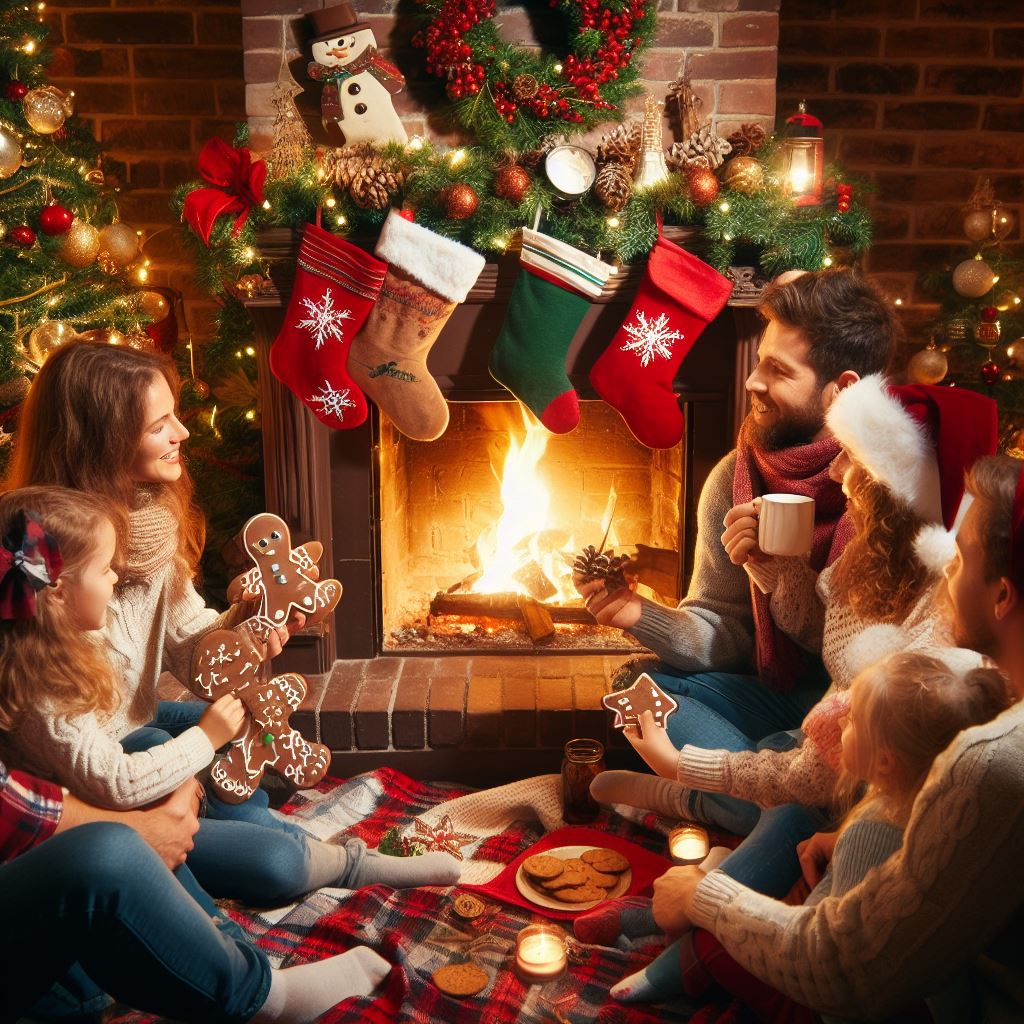
By the mid-19th century, Christmas had evolved into a more family-oriented holiday, with customs like exchanging gifts and gathering around the Christmas tree becoming common American traditions. Christmas cards also gained popularity during this time.
Victorian Influence and the Americanization of Christmas
The Victorian era in the 19th century had a significant impact on the way Americans celebrated Christmas in the United States. Queen Victoria’s husband, Prince Albert, introduced the Christmas tree to England, and this tradition quickly made its way to America, where it then became a staple of the holiday.
The 19th century also saw Christmas becoming a public holiday, with several states officially recognizing it. The influence of Charles Dickens’ “A Christmas Carol” continued from the 18th century, and the image of a warm and festive Christmas season brought about a sense of unity and goodwill that continues to be associated with the holiday today.
The 19th century was a pivotal period in the development of Christmas traditions in the United States. This century saw the emergence of many customs and practices that have become an integral part of the modern American Christmas celebration.
Here are some key Christmas traditions of the 19th century:
- Christmas Trees:
- The tradition of decorating Christmas trees, introduced by German immigrants in the 18th century, became increasingly popular during the 19th century. Families would decorate trees with candles, homemade ornaments, and small gifts. This practice eventually spread throughout the country.
- Santa Claus:
- The image of Santa Claus, as we know him today, began to take shape in the 19th century. The influence of Clement Clarke Moore’s 1823 poem “A Visit from St. Nicholas” (commonly known as “The Night Before Christmas”) and Thomas Nast’s illustrations in publications like Harper’s Weekly helped establish the modern image of Santa Claus as a jolly, gift-giving figure.
- Christmas Cards:
- The exchange of Christmas cards became more widespread in the 19th century. The first commercial Christmas cards were produced in the 1840s, and people began sending these cards to convey holiday greetings and well-wishes.
- Christmas Carols:
- The popularity of Christmas carols continued to grow during the 19th century. Some of the most beloved carols, such as “Silent Night,” “Jingle Bells,” and “Hark! The Herald Angels Sing,” were composed during this period. Carolers often visited homes and communities to spread holiday cheer.
- Gift-Giving:
- The 19th century saw the transformation of gift-giving into a more significant tradition. Families began exchanging gifts, and department stores started to promote Christmas shopping. This marked the beginning of the commercialization of Christmas.
- Christmas Eve Services:
- Candlelight services and midnight Mass became increasingly common during the 19th century, with churches holding special Christmas Eve services to commemorate the birth of Jesus.
- Christmas Dinner:
- The Christmas feast was an important tradition, with roasted meats like turkey, goose, and ham often taking center stage. Side dishes included vegetables, fruits, and desserts like plum pudding.
- Christmas Decorations:
- In addition to the Christmas tree, homes were adorned with wreaths, garlands, and mistletoe. These decorations added to the festive atmosphere and created a sense of holiday warmth.
- Twelfth Night Celebrations:
- Twelfth Night remained an important part of the Christmas season, with parties and gatherings held on the evening of January 5th to mark the end of the holiday festivities.
- Christmas Parlor Games:
- Families and friends often played parlor games during Christmas gatherings, such as charades, snapdragon (a game involving grabbing raisins from a flaming dish), and word games.
- Nativity Scenes:
- Nativity scenes or creches to depict the birth of Jesus became a common practice in homes and churches.
The 19th century laid the groundwork for the way Christmas is celebrated in the United States today. Many of the traditions and customs established during this period have endured and continue to be cherished by families across the country.
20th Century Christmas Traditions
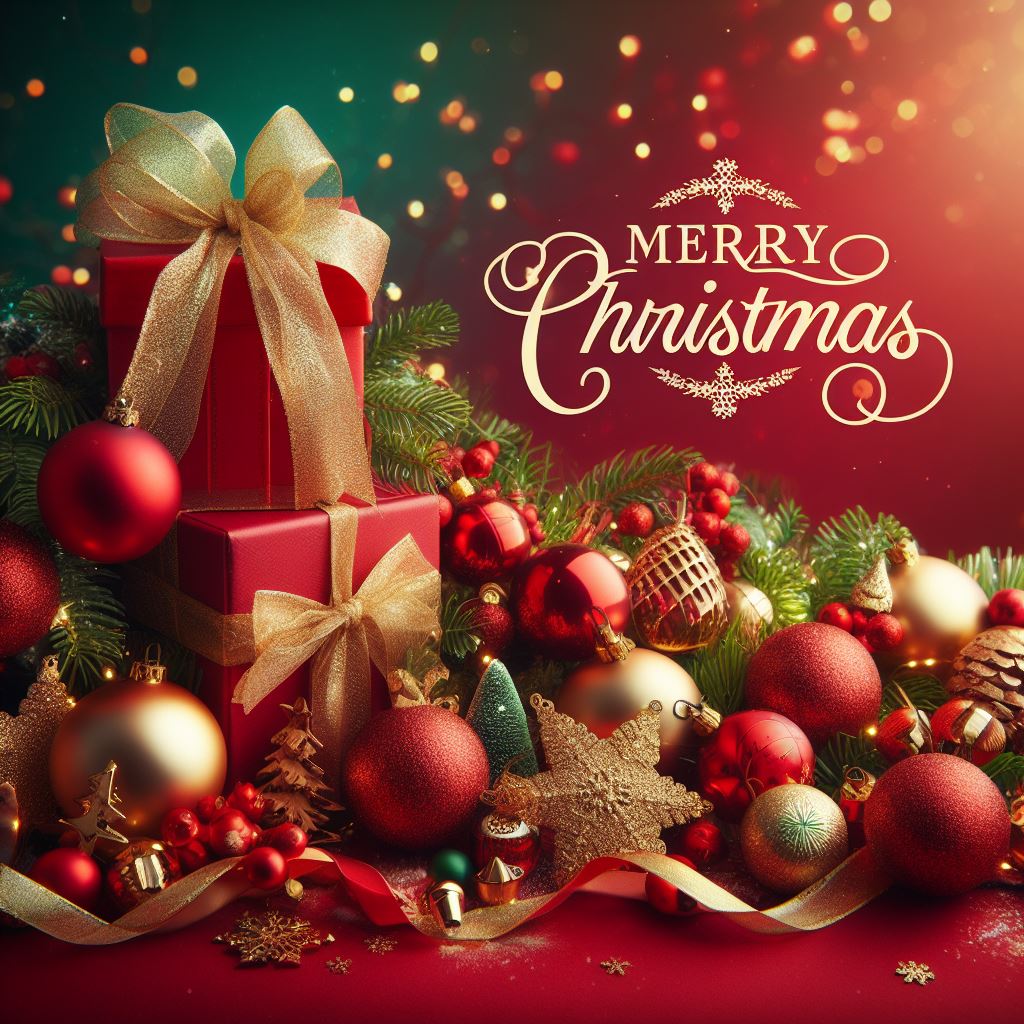
The 20th century brought significant changes, innovations, and commercialization to Christmas in the United States. With the advent of radio and television, and shifts in societal norms, holiday specials and Christmas music became an integral part of the season. Retailers capitalized on the holiday’s popularity, using festive displays and advertising to drive sales.
Here are some key Christmas traditions and developments in the 20th century:
- Commercialization of Christmas:
- The 20th century saw the continued commercialization of Christmas, with retailers promoting gift-buying, sales, and holiday-themed advertisements. The holiday shopping season, beginning with Black Friday and leading up to Christmas, became a significant economic driver.
- Christmas Cards:
- Sending Christmas cards remained a popular tradition throughout the 20th century, with an increasing variety of designs and personalization options. Greeting card companies expanded their offerings, and personalized photo cards became a common choice.
- Christmas Trees and Decorations:
- The Christmas tree continued to be a central decoration in American homes. In the 20th century, artificial Christmas trees gained popularity, offering a more convenient and reusable alternative to real trees. Outdoor holiday lighting and inflatable decorations became more common, enhancing the festive atmosphere.
- Santa Claus:
- The image of Santa Claus was further popularized through advertising, department store Santas, and Coca-Cola’s iconic portrayal of Santa Claus in the 1930s. The image of a rotund, jolly Santa Claus in a red suit with white trim became universally recognized.
- Christmas Music:
- The 20th century saw the emergence of new and beloved Christmas songs and carols. Classic holiday songs like “Rudolph the Red-Nosed Reindeer,” “White Christmas,” and “Rockin’ Around the Christmas Tree” became staples of the season. Christmas music became a significant part of the holiday experience, with radio stations dedicated to playing holiday tunes all season long.
- Christmas Movies and TV Specials:
- Iconic Christmas films and television specials, such as “It’s a Wonderful Life,” “A Charlie Brown Christmas,” and “How the Grinch Stole Christmas,” became cherished traditions for families to watch together during the holiday season.
- Christmas Parades:
- Many cities across the United States began hosting annual Christmas parades in the 20th century. These parades often featured Santa Claus, floats, marching bands, and festive decorations. Peoria, Illinois, is home to the oldest and longest running Santa Claus parade in the United States. 1887 is marked as the first year of this parade which celebrated the start of construction on the Upper Free bridge over the Illinois River.
- Advent Calendars:
- Advent calendars, which count down the days to Christmas, gained popularity in the 20th century. They are often filled with chocolates or small gifts, with one door opened each day in December.
- Ugly Christmas Sweaters:
- Wearing festive and often humorous holiday-themed sweaters became a humorous and lighthearted tradition. Ugly Christmas sweater parties and contests became popular in the late 20th century.
- Online Shopping:
- With the rise of the internet, online shopping for Christmas gifts and decorations became increasingly common in the late 20th century. This provided more convenience for holiday shoppers.
- Outdoor Lighting Displays:
- Elaborate outdoor lighting displays on homes and in public spaces became more popular. Some neighborhoods became known for their extravagant Christmas light displays, attracting visitors from near and far.
- Christmas Charity and Volunteerism:
- The 20th century also emphasized the importance of giving back during the holiday season. Charitable organizations, such as the Salvation Army’s bell ringers and Toys for Tots, have played a significant role in helping those in need during Christmas.
The 20th century brought a mix of traditional and evolving customs, reflecting changes in technology, consumer culture, and entertainment. Many of these traditions, both old and new, continue to shape the way Americans celebrate Christmas today.
21st Century Christmas Traditions
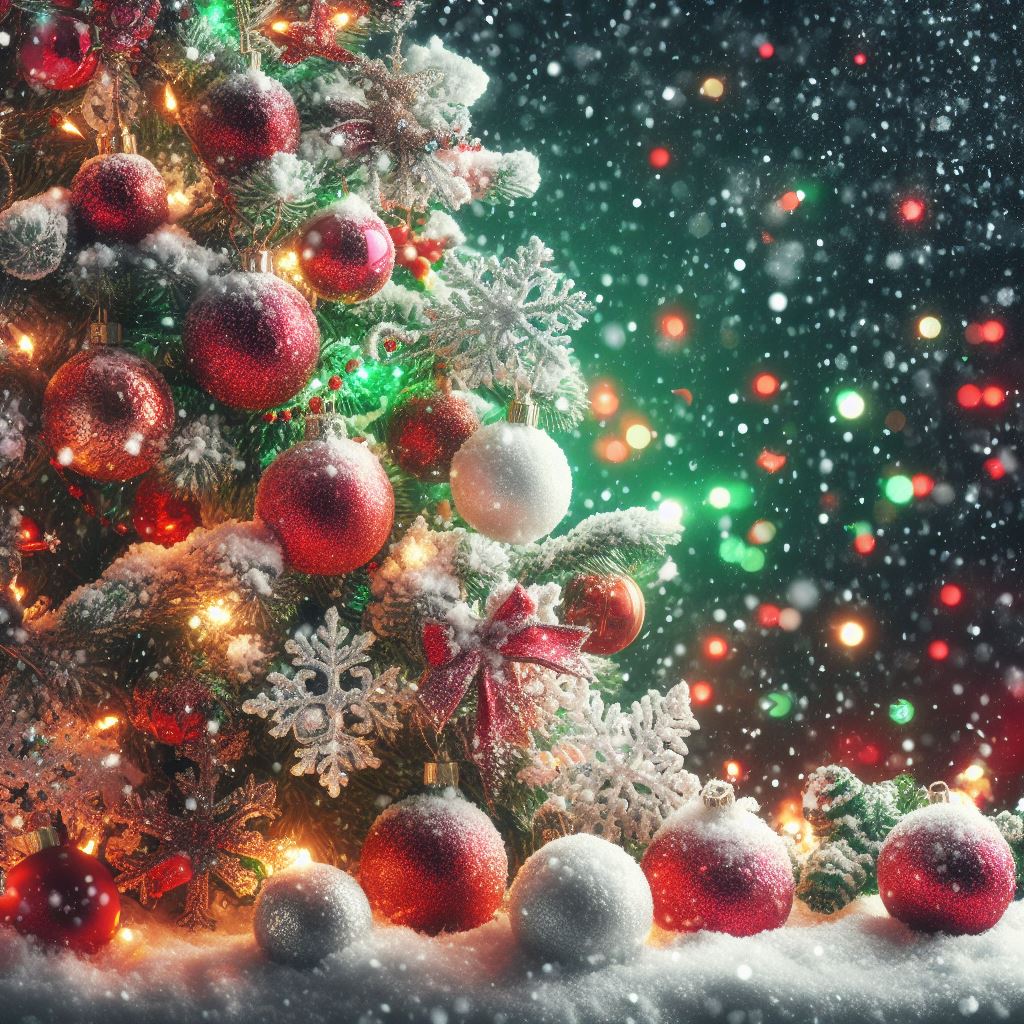
The 21st century has witnessed the continuation of established Christmas traditions while also introducing new customs influenced by evolving technology, changing demographics, and global trends.
Here are some 21st-century Christmas traditions and developments:
- Online Shopping:
- The 21st century has seen a significant shift towards online shopping for Christmas gifts and decorations. E-commerce platforms and the convenience of ordering items online have made shopping more accessible and efficient.
- Digital Christmas Cards:
- Electronic and digital Christmas cards have become increasingly popular. People now send e-cards, personalized digital greetings, and messages via text, email and social media, reducing the environmental impact of paper cards.
- Smart Home Decorations:
- Smart home technology allows people to control their Christmas lights, decorations, and music using voice commands and mobile apps, creating dynamic and interactive displays.
- Sustainable Christmas:
- Growing concerns about the environment have led to an increased interest in eco-friendly and sustainable Christmas traditions. People are choosing recyclable or reusable wrapping materials, energy-efficient LED lights, and eco-conscious gift options.
- Virtual Celebrations:
- The COVID-19 pandemic accelerated the adoption of virtual celebrations for Christmas. Families and friends often gather over video conferencing platforms to open gifts, share meals, and maintain connections when distance or health concerns prevent in-person gatherings.
- Christmas Movie Streaming:
- Streaming services have made it easier to watch a wide selection of Christmas movies and TV specials on-demand. Families can now enjoy their favorite holiday films at their convenience.
- Customized Christmas Decor:
- The ability to create custom decorations and ornaments with personal photos and messages has become increasingly popular. Families often personalize ornaments and decorations to make their holiday displays unique.
- Elf on the Shelf:
- The tradition of the “Elf on the Shelf” has become a popular way to create a sense of excitement and wonder for children. Families place a small elf doll in different spots around the house, and the elf “reports” back to Santa on the children’s behavior.
- Advent Calendars and Advent Calendars for Adults:
- The popularity of Advent calendars has continued to grow, with both traditional and unique options for children and adults. Some Advent calendars now contain small gifts, treats, or even alcoholic beverages for adults.
- Christmas Light Shows:
- Elaborate Christmas light shows set to music have become a major attraction in many communities. These synchronized light displays often feature intricate designs and can be visited or viewed from the safety of your vehicle.
- Charity and Volunteering:
- The spirit of giving back during the holiday season remains strong. Many people participate in charitable activities and volunteer work to help those in need, reflecting the values of generosity and kindness.
- Inclusive Celebrations:
- There is a growing emphasis on celebrating the diverse religious and cultural backgrounds of people in the 21st century. Inclusivity and respect for different traditions and celebrations are important aspects of modern Christmas.
The 21st century has introduced new technological and social elements to Christmas celebrations, while also emphasizing the enduring values of love, generosity, and togetherness during the holiday season. These traditions reflect the changing dynamics of modern life and continue to evolve with each passing year.
Predicting 22nd Century Christmas Traditions

Predicting with certainty what Christmas traditions will look like in the 22nd century is challenging, as cultural shifts and technological advancements will undoubtedly play a significant role in shaping the holiday. However, we can make some educated guesses about potential 22nd-century Christmas traditions based on current trends and emerging developments:
Here are some predictions for the 22nd-century Christmas traditions:
- Advanced Virtual Celebrations:
- With ongoing advancements in virtual reality (VR) and augmented reality (AR), people may be able to celebrate Christmas with more immersive and lifelike virtual gatherings. Families separated by great distances may come together in shared virtual spaces, creating a sense of togetherness.
- Sustainable Celebrations:
- The emphasis on environmental sustainability may lead to even more eco-friendly Christmas traditions. This could include biodegradable decorations, energy-efficient lighting, and locally sourced, sustainable holiday feasts.
- Artificial Intelligence (AI) Santa Claus:
- AI-driven virtual Santa Claus experiences might offer personalized holiday greetings and gifts based on an individual’s preferences and behavior. Santa may become a virtual friend throughout the year.
- Hyper-Connected Gift-Giving:
- The practice of gift-giving may become even more personalized, with AI-driven gift recommendations and instant digital gift delivery. Hyper-connected gift registries and wish lists could simplify the gift-giving process.
- Space-Themed Decorations:
- As space exploration continues, Christmas decorations may incorporate space and interstellar themes, reflecting humanity’s growing interest in the cosmos.
- 3D-Printed Decorations and Gifts:
- 3D printing technology may make it possible for people to design and create their own customized Christmas decorations and gifts at home.
- Augmented Reality Nativity Scenes:
- Interactive Nativity scenes using AR technology may allow families to recreate the story of the birth of Jesus in a dynamic and educational way.
- Ethical Consumption:
- A focus on ethical consumerism may lead to increased support for fair trade and ethically sourced holiday products, promoting social and economic justice.
- Personalized Holographic Christmas Greetings:
- Holographic greeting cards and displays featuring personalized messages and holographic imagery could become a unique and memorable way to send holiday wishes.
- AI-Designed Christmas Songs:
- AI-generated Christmas songs could provide a fresh and constantly evolving soundtrack for the season, customized to individual preferences.
- Robot-Assisted Holiday Meals:
- Advanced cooking robots or automated kitchens may assist in preparing traditional holiday meals, allowing for more convenience and precision in cooking.
- Cultural Inclusivity:
- Christmas traditions in the 22nd century may continue to evolve toward greater inclusivity, celebrating a diverse range of cultures, beliefs, and traditions during the holiday season.
- Multi-Sensory Christmas Experiences:
- Advanced technology could provide multi-sensory experiences that engage not only sight and sound but also touch, taste, and smell to create more immersive Christmas celebrations.
It’s important to remember that while technology and cultural shifts will influence Christmas traditions in the 22nd century, the core values of love, togetherness, and goodwill are likely to remain a central focus. Additionally, the exact nature of these traditions will be shaped by the values, interests, and priorities of future generations.
Conclusion:
In conclusion, the story of Christmas in the United States is a rich tapestry of traditions, history, and cultural influences that have evolved over centuries. From its biblical origins to the present day, Christmas has continuously adapted to reflect the changing society and technology of each era. Early controversies in the American colonies gave way to the emergence of 18th-century traditions, which laid the groundwork for the Victorian-era and 20th-century customs that remain integral to the holiday.
As we venture into the 21st century and beyond, it is clear that Christmas will continue to evolve, influenced by emerging technologies, global interconnectedness, and shifting cultural norms. Whether through advanced virtual celebrations, eco-conscious practices, or innovative musical renditions, the core values of love, togetherness, and goodwill will remain at the heart of this cherished holiday. Christmas in the 22nd century will undoubtedly bring new and exciting traditions, yet it will always remind us of the timeless message of joy, hope, and the celebration of life and love.
The Absence Of Jesus Christ From The Christmas Tradition In America
In reflecting on the ever-evolving traditions of Christmas in the United States, one notable transformation becomes evident – the shift in focus from the religious origins of the holiday, centered on the birth of Jesus Christ, to a more secular and culturally diverse celebration. The absence of Jesus Christ from the holiday, a stark contrast to its original intent, underscores the complex interplay of tradition, culture, and commercialization.
While Christmas still holds deep spiritual significance for many, it has also become a universal celebration that transcends religious boundaries. The holiday now encompasses a vast array of customs and practices, reflecting the diversity of the American population. This evolution is a testament to the enduring nature of Christmas, which has adapted to meet the needs and desires of each generation.
Yet, as we celebrate Christmas in all its various forms, it remains important to remember and respect the original intent of the holiday, rooted in the story of Jesus Christ’s birth. Regardless of the religious or cultural lens through which we view Christmas, the fundamental message of love, hope, and goodwill that Christ’s birth symbolizes continues to resonate. Ultimately, the absence of Jesus Christ from some aspects of the holiday should serve as a reminder of the importance of embracing the true spirit of Christmas and its timeless message of compassion and unity.
Back To The Tradition Of Celebrating The Birth of Christ
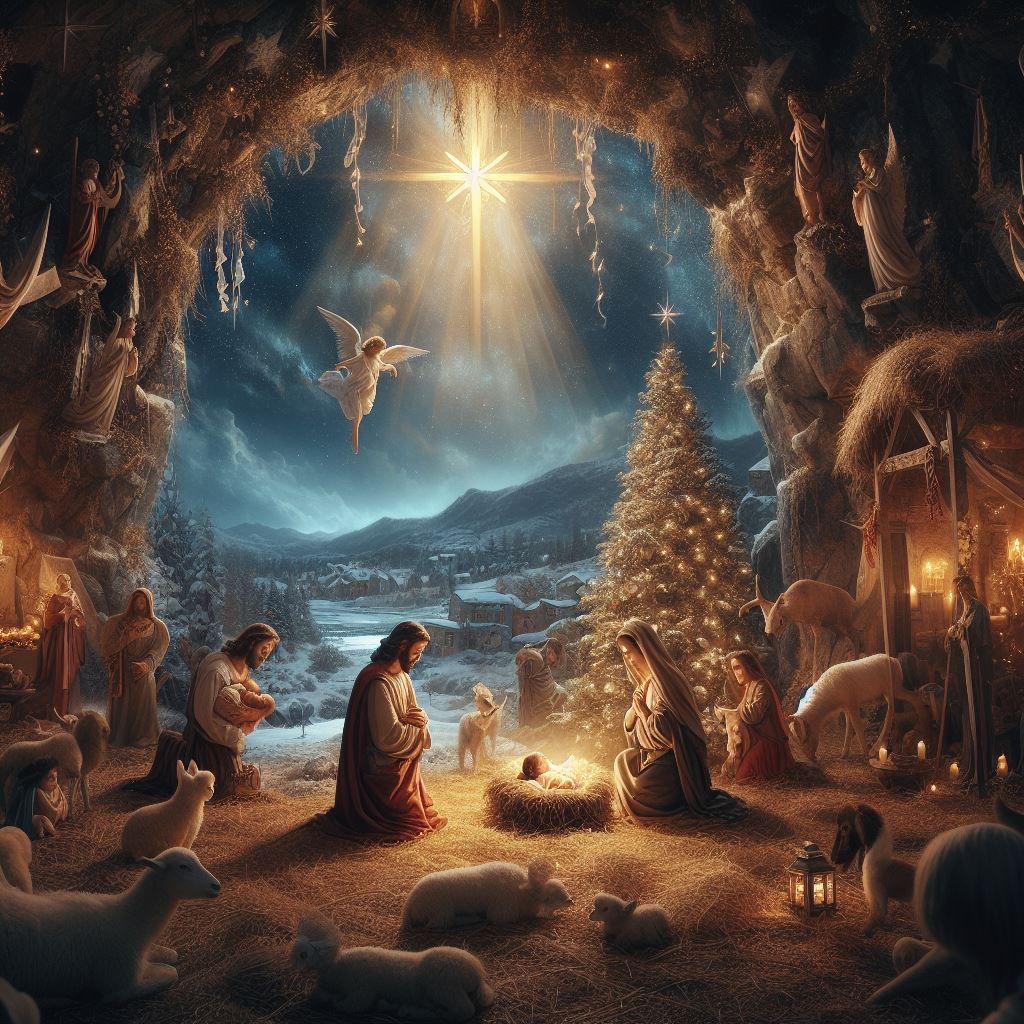
Returning to a more spiritually focused celebration of the birth of Christ during Christmas is a personal and community-based endeavor. Here are some steps that individuals and communities can take to emphasize the religious and spiritual aspects of Christmas:
Here are some ideas on how to keep Christ in your Christmas traditions:
- Personal Reflection and Devotion:
- Start by taking time for personal reflection on the religious significance of Christmas. Read the biblical accounts of the birth of Jesus in the Gospels of Matthew and Luke. Consider how these stories inspire faith and reflection on the meaning of Christ’s birth.
- Attend Religious Services:
- Attend Christmas services at your local church or place of worship. Participate in Advent services, Christmas Eve Mass, or other religious gatherings that focus on the birth of Christ.
- Create a Nativity Scene:
- Set up a nativity scene in your home as a reminder of the birth of Jesus. This visual representation can serve as a focal point for reflecting on the religious aspects of Christmas.
- Incorporate Religious Traditions:
- Incorporate religious customs into your Christmas celebrations, such as reading passages from the Bible, singing hymns, or praying as a family. You can also consider observing the Advent season with an Advent calendar or wreath.
- Incorporate Religious Traditions:
- Incorporate religious customs into your Christmas celebrations, such as reading passages from the Bible, singing hymns, or praying as a family. You can also consider observing the Advent season with an Advent calendar or wreath.
- Charity and Giving:
- Embrace the spirit of Christ by emphasizing acts of charity and giving during the holiday season. Consider volunteering at a local shelter, donating to a charity, or helping those in need.
- Religious Music and Carols:
- Listen to and sing religious Christmas hymns and carols that emphasize the story of Jesus’ birth. This can help rekindle the spiritual aspects of the holiday.
- Educate and Involve Children:
- Teach children the religious significance of Christmas and involve them in the celebration of Jesus’ birth. Share the Nativity story and encourage them to participate in religious activities.
- Reduce Commercialization:
- Strive to reduce the commercialization of Christmas in your own life by focusing on meaningful gifts, experiences, and moments of connection with loved ones. Consider simplifying your holiday celebrations.
- Community Engagement:
- Encourage your community to support and participate in religious Christmas events and services. Advocate for the recognition of the religious origins of Christmas in public spaces.
- Engage with Your Faith Community:
- Collaborate with your faith community to organize events and activities that promote the religious aspects of Christmas. This could include nativity reenactments, prayer services, or community outreach programs.
Reclaiming the celebration of Christ’s birth during Christmas requires a deliberate and mindful approach, both individually and collectively. By focusing on the spiritual significance of the holiday and incorporating religious practices into your celebrations, you can help ensure that the true meaning of Christmas remains at the forefront of your observance.
Visit Our Page 2025 USA American Holiday Calendar
Read More About Christmas – The Magic Of Christmas

